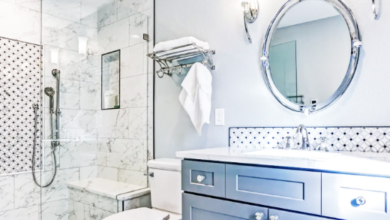The Art of Brewing: Unveiling the Timeless Elegance of Teapots & Teapot Sets

Key Takeaways:
- Teapots have a rich history originating from ancient civilizations and continue to be an essential part of tea-brewing rituals today.
- The evolution of teapots showcases craftsmanship, innovation, and cultural influences throughout time.
- Teapot designs have become a fusion of traditional styles and modern aesthetics, with a trend towards reviving traditional techniques and eco-friendly materials.
- Teapot making is a meticulous craft that requires skill, precision, and an understanding of the various materials used.
- Teapot designs transcend function and reflect cultural aesthetics, traditions, and heritage.
- Contemporary teapot artists push the boundaries of form and function, creating visually stunning pieces with artistic merit.
- Teapots play a vital role in the ritual of tea brewing, requiring precision in tea chemistry, water temperature, infusion time, and brewing techniques.
- Teapot accessories and brewing essentials enhance the tea brewing experience, including filters, infusers, tea trays, and specialized tea cups.
1. The History Behind Teapots: From Ancient Origins to Modern Elegance
Teapots have a rich history that dates back centuries, originating from ancient civilizations. The evolution of teapots can be traced through time, showcasing the craftsmanship, innovation, and cultural influences that have shaped these elegant vessels. Today, teapots continue to capture our imagination with their beauty and functionality, making them an essential part of tea brewing rituals.
1.1 The Ancient Beginnings: Exploring the Origins of Teapots
The history of teapots can be traced back to ancient China, where tea drinking was a central aspect of daily life. Early pottery vessels, known as “hand-pulled pots,” were used to steep tea leaves in hot water. These simplistic vessels gradually evolved into more intricate forms, with the addition of handles and spouts for easier pouring.
During the Song Dynasty (960-1279 AD), teapots took on a more distinguished shape and began to resemble the teapots we are familiar with today. These early teapots were typically made from Yixing clay, a unique material known for its porous nature and ability to enhance the flavor of tea.
1.2 Innovations and Influences: How Teapots Evolved through the Ages
As tea drinking spread beyond China to other parts of Asia and eventually the world, teapots underwent various innovations and influences. In Japan, the art of tea ceremony led to the development of the iconic “Kyusu” teapot, characterized by its handle on the side and built-in strainer.
In Europe, the introduction of tea by traders from the East in the 17th century sparked a desire for teapots that suited the Western aesthetic. This led to the production of elaborate porcelain teapots by renowned European porcelain manufacturers, such as Meissen and Wedgwood.
During the Industrial Revolution, teapot production shifted from traditional handcraftsmanship to mass production. This allowed for the creation of teapots in a variety of styles and materials, including porcelain, ceramic, glass, and metal.
1.3 Teapots Today: The Modern Designs and Trends
Today, teapot designs have become a fusion of traditional styles and modern aesthetics. The market offers a wide range of options to suit different tastes and preferences. From minimalist and sleek designs to vibrant and whimsical patterns, teapots now come in various shapes, sizes, and materials.
One of the popular trends in teapots & teapot sets design is the revival of traditional techniques and craftsmanship. Artisans are rediscovering ancient pottery techniques and incorporating them into contemporary teapot designs, creating unique and captivating pieces.
Furthermore, eco-friendly teapots made from sustainable materials, such as bamboo or recycled glass, have gained popularity due to the growing awareness of environmental issues.
2. The Art of Teapot Making: Mastering the Craftsmanship and Techniques
Teapot making is a meticulous craft that requires skill, precision, and an understanding of the materials used. Behind every beautifully crafted teapot is a master craftsman who dedicates years to honing their skills and perfecting their techniques.
2.1 The Skillful Hands Behind Teapot Production: Meet the Master Craftsmen
The art of teapot making involves a collaboration between the potter and the sculptor. The potter shapes and molds the clay, while the sculptor brings the teapot to life through intricate detailing and carving. These master craftsmen possess a deep understanding of form, balance, and proportion, ensuring that each teapot is not only aesthetically pleasing but also functional.
One of the most renowned regions for teapot production is Yixing in China. Yixing teapots are highly regarded for their craftsmanship and the unique properties of the clay used. Skilled artisans in Yixing meticulously handcraft teapots, taking into consideration the texture, color, and temperature resilience of the clay.
2.2 From Clay to Ceramic: Unveiling the Materials Used in Teapot Making
Teapots are made from a variety of materials, each imparting its own characteristics and benefits to the tea brewing process. The most common materials used in teapot making include clay, ceramic, glass, and metal.
Clay teapots, particularly those made from Yixing clay, are prized for their ability to enhance the flavor of tea over time. The porous nature of the clay absorbs the oils and aromas from the tea, resulting in a unique and personalized brewing experience.
Ceramic teapots, on the other hand, offer versatility in terms of design and style. They can be glazed or unglazed, allowing for different textures and finishes. Ceramic teapots are known for their excellent heat retention, making them ideal for brewing various types of tea.
Glass teapots have gained popularity for their ability to showcase the beautiful colors and textures of tea leaves as they steep. They also allow for easy monitoring of the infusion process, making them a favorite among tea enthusiasts.
Metal teapots, such as those made from stainless steel or cast iron, are known for their durability and heat retention properties. They are often used for brewing strong and robust teas, as they can withstand high temperatures.
2.3 Secrets of a Perfect Teapot: Techniques and Processes Revealed
The creation of a perfect teapot involves a series of techniques and processes that are carefully executed to ensure both form and functionality.
One of the important techniques used in teapot making is throwing on a pottery wheel. The potter meticulously shapes the clay using their hands and a spinning wheel, ensuring the right thickness and balance of the teapot body. This requires years of practice to achieve the desired form and symmetry.
After shaping, the teapot undergoes a drying process, which allows the clay to harden and prepare it for firing. Firing is a crucial step that determines the final appearance and durability of the teapot. The temperature and duration of the firing process vary depending on the type of clay used.
Once the teapot is fired, it is often hand-painted or glazed to add color, texture, and a protective coating. The glaze not only enhances the visual appeal of the teapot but also creates a smooth and non-porous surface that helps retain heat during the brewing process.
The final step in teapot making is adding the handle and spout, which are attached with precision to ensure a comfortable grip and seamless pouring. The teapot is then inspected for any imperfections and undergoes quality control measures before it is ready to be showcased and used for tea brewing.
3. The Iconic Teapot Designs: Aesthetic Appeal & Cultural Significance
Teapot designs have transcended mere function and have become pieces of art that reflect cultural aesthetics, traditions, and heritage. From classic designs that celebrate the beauty of simplicity to bold and avant-garde creations that challenge conventions, teapots have become a canvas for artistic expression.
3.1 Beauty in Diversity: Exploring Different Styles of Teapot Designs
Teapot designs encompass a wide range of styles, each representing a unique blend of tradition and innovation. Traditional styles, such as the round-bodied “Gongfu” teapot from China or the elegant “Brown Betty” teapot from England, evoke a sense of nostalgia and timeless charm.
Contemporary designs push the boundaries of imagination, incorporating unconventional shapes, materials, and colors. These teapots are often inspired by nature, architecture, or abstract concepts, resulting in visually striking pieces that add a touch of modernity to tea ceremonies.
3.2 Cultural Influences: How Teapot Designs Reflect Traditions and Heritage
Teapot designs are deeply rooted in culture and heritage, reflecting the traditions and artistic sensibilities of different regions. For example, the intricate floral patterns found in Japanese “Kutani” teapots are influenced by traditional porcelain painting techniques that have been passed down through generations.
In China, teapots are often adorned with symbolic motifs or auspicious emblems that carry significant cultural meaning. Dragons, phoenixes, or auspicious Chinese characters are commonly depicted on teapots, symbolizing prosperity, good fortune, and harmony.
Teapot designs also vary in accordance with different tea-drinking rituals and ceremonies. The “Yixing” teapot, with its small size and unglazed clay finish, is designed specifically for Gongfu-style brewing, which involves multiple short infusions. The handle-free Japanese “Houhin” teapot, on the other hand, allows for precise pouring, making it ideal for the intricate tea ceremony.
3.3 Inspiring Modern Artists: Contemporary Teapot Designs That Push Boundaries
The world of teapot design has seen the emergence of modern artists who challenge the conventional notions of form and function. These contemporary artists experiment with unconventional materials, asymmetrical shapes, and unique constructions, creating teapots that are as much admired for their artistic merit as they are for their brewing capabilities.
One such artist is Richard Notkin, known for his intricate ceramic teapots that blend historical references and political commentary. His teapots often feature sculptural elements and intricate textures, captivating the viewer with their thought-provoking narratives.
Another notable artist is Shi Sfyri, who creates teapots using a combination of traditional craftsmanship and contemporary design. Her teapots showcase clean lines, bold colors, and unexpected materials, resulting in visually stunning pieces that challenge the boundaries of teapot design.
4. The Ritual of Tea: Enhancing the Teapot Experience through Proper Brewing
Beyond their aesthetic appeal, teapots play a vital role in the ritual of tea brewing. The art of tea brewing involves a deep understanding of the tea leaves, water temperature, infusion time, and the techniques used to extract the best flavors and aromas from the tea.
4.1 The Perfect Brew: Mastering the Science of Tea Infusion
Achieving the perfect brew requires precision and knowledge of tea chemistry. Different types of tea, such as green, black, white, and oolong, have their own specific brewing parameters to extract their distinct flavors and aromas.
Water temperature plays a crucial role in tea brewing. Delicate green teas, for example, require lower temperatures to avoid bitterness, while black teas benefit from hotter water to enhance their robust flavors. Using a teapot with good heat retention helps maintain the desired temperature throughout the infusion process.
Read also The Role of Artificial Intelligence in Modern Healthcare: Opportunities and Challenges
Infusion time is equally important in tea brewing. Oversteeping can result in a bitter taste, while understeeping may produce a weak and flavorless cup. Teapots with built-in infusers or filters allow for better control over infusion time and make it easy to remove the tea leaves once the desired strength is achieved.
4.2 Tea Brewing Techniques: Uncovering the Secrets to a Flawless Cup
Various tea brewing techniques have been developed over centuries to extract the best flavors and aromas from different types of tea. Some of the popular techniques include Gongfu brewing, Western-style brewing, and Japanese tea ceremonies.
Gongfu brewing, popular in China and Taiwan, involves multiple short infusions using a small teapot or gaiwan. This technique allows for a more concentrated and nuanced flavor profile, as the leaves are steeped for a short time and in small quantities.
Western-style brewing, on the other hand, involves steeping a larger quantity of tea with longer infusion times. This method is commonly used in Europe and North America and is suitable for a wide range of tea types, particularly black teas.
Japanese tea ceremonies, such as the “Chanoyu,” involve a highly ritualized process of preparing and serving matcha, a powdered green tea. Specialized teapots and utensils are used to whisk the powdered tea into a frothy concoction, creating a unique and immersive tea experience.
4.3 Elevating the Experience: Teapot Accessories and Brewing Essentials
To enhance the teapot experience, various accessories and brewing essentials are available to cater to different needs and preferences. These accessories include tea filters, infusers, tea trays, and specialized tea cups.
Tea filters and infusers allow for easy removal of tea leaves after infusion, ensuring a clean and sediment-free cup of tea. Tea trays, such as the Chinese “Cha Dao,” provide a dedicated space for brewing and serving tea, while also adding an element of elegance to the tea ritual.
Specialized tea cups, such as the Japanese “Yunomi” or the Chinese “Gaiwan,” are designed to enhance the sensory experience of tea drinking. These cups are crafted to showcase the colors, aromas, and textures of the brewed tea, allowing the tea enthusiast to fully immerse themselves in the tea-drinking experience.
In conclusion, teapots and teapot sets are much more than just vessels for tea brewing. They embody the rich history, craftsmanship, and cultural significance of tea-drinking traditions. Whether it’s a handcrafted Yixing teapot or a contemporary design masterpiece, teapots are a testament to the artistry and elegance of brewing the perfect cup of tea.




